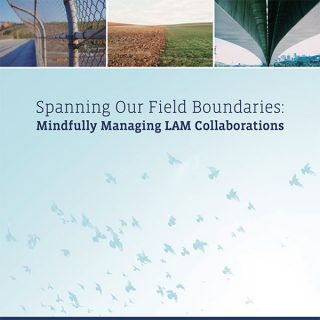October 6, 2015
Spanning Our Field Boundaries: Mindfully Managing LAM Collaborations
Museums, archives, and libraries serve as knowledge conduits for their constituent communities. A core focus for each of these three fields is organizing and adeptly connecting users with content, often in service to the public good. This mission alignment positions organizations in these fields to collaborate. Federal funding agencies, such as the Institute of Museum and Library Services (IMLS), even directly recommend that organizations pursue such alliances to cross-germinate, achieve efficiencies of scale, leverage limited resources, and better serve their user communities.
While museum, archives, and library missions may be aligned, there is a wide variance across these fields (and their myriad sub-fields) in other aspects, including organizational sizes and governance structures, staffing and funding, acronyms and vocabularies, disciplinary specialties and user communities served. These factors may create real or perceived boundaries to cross-field collaboration. Each of these three fields has its own sense of libraries, archives, and museums operate largely within the bounds presented by these field (and sub-field) identities.
This brief will examine the perceptions and perspectives that make cross-field collaboration difficult for archives, libraries, and museums. It is not meant to illuminate the “real truth” about the similarities or differences between these three fields. Instead, it aspires to shed light on some of the issues that currently hinder our boundary-spanning potential, so that together we can mindfully observe and manage these issues as we develop collaborations between our archives, libraries and museums.
